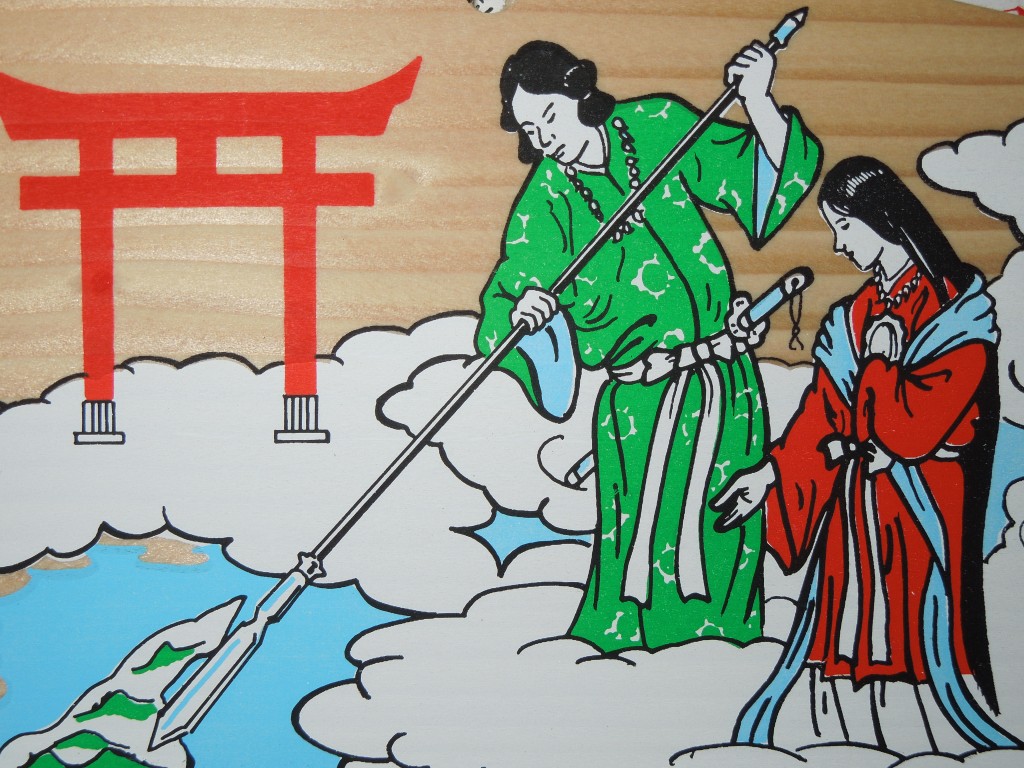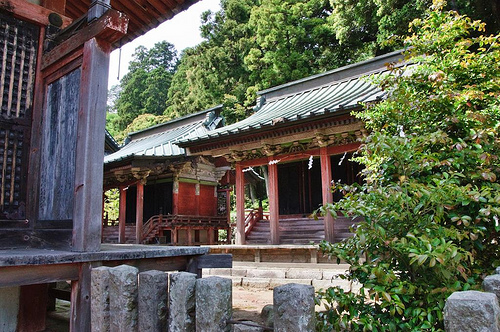An article in the Daily Yomiuri by naturalist and cultural anthropologist, Kevin Short, talks of the mythological connections of Mt Tsukuba, not far from Tokyo.
*******************************************************************************************
Mt. Tsukuba’s twin peaks represent Japan’s mythical married couple
Kevin Short / Daily Yomiuri Columnist

Twin peaks of Mt Tsukuba, at 877 and 871 meters
An old famous saying goes: “Mt. Fuji in the west and Mt. Tsukuba in the east.” Although well under 1,000 meters, Mt. Tsukuba is a massive chunk of granite that rises dramatically out of the surrounding countryside. The distinctive ridgeline silhouette culminates in two separate peaks connected by a saddle ridge.
Located in southern Ibaraki Prefecture, just a short trip from central Tokyo, Mt. Tsukuba has since ancient times been considered a Reizan, or “Spirit Mountain,” and during the Edo period (1603-1867) it was a popular destination for pilgrimages. In recent times, it has been selected as one of Japan’s Hyakumeizan, or “100 Great Mountains.”
In Japanese folk cosmology, a pair of closely matched objects, such as trees or rocks, usually symbolizes a married couple. The twin peaks of Mt. Tsukuba represent Izanagi and Izanami, the nation’s first conjugal pair and creator deities, dispatched from the Celestial Realm to birth a new land and kingdom on the surface of the earth.
According to Japan’s classic mythology, in the beginning the earth was nothing more than a seething chaotic mess of swirling tides. Izanagi, a male kami, and Izanami, his wife, descended from the Celestial Realm to a sacred bridge floating over the chaos. Izanagi dipped a long-handled spear into the swirling mess. When he withdrew it, brine dripping from the tip solidified into an island.

Izanagi and Izanami stir the primordial matter
The two deities jumped down to the island. After some naive school-kid banter over comparative anatomy, they erected a pillar and danced around it in different directions. “Wow! Just look at this hot guy I found here!” exclaimed Izanami when the two met. “And just check out this foxy lady!” answered her partner. The two then made love, and following a few mishaps caused by the woman having spoken first, gave birth to the Japanese islands.
Viewed from the southwest, the left, or western peak of the mountain appears higher. This peak, called Nantai-san, or “Man’s Body Mountain,” embodies the spirit of the male creator deity Izanami. The right, or eastern peak, named Nyotai-san, or “Woman’s Body Mountain,” embodies that of Izanami. When the two peaks were actually measured, the female, at 877 meters, turned out to be six meters higher than the male.
Visitors can be whisked up the slopes by cable car or ropeway, but those wishing to experience the mountain’s magnificent nature and culture firsthand should choose one of the many well-maintained and clearly marked hiking trails. For first-timers, the Shirakumobashi Trail, which switchbacks up the south face to reach the ridge east of Nyotai-san, is a good choice.
The road up starts off by ascending slowly along the Omote-sando, or main avenue of approach. On both sides, the street is lined with restaurants, hotels and stores that in the past catered to pilgrims but now serve hikers and tourists. The Shirakumobashi route veers off to the right at the bottom of the stone steps leading up to the Tsukubasan- jinja, which is the mountain’s main shrine.

The shrine which is believed to bestow marital harmony and conjugal bliss has become a popular place for traditional Japanese weddings. (photos courtesy of Photo Japan blog.)


Leave a Reply